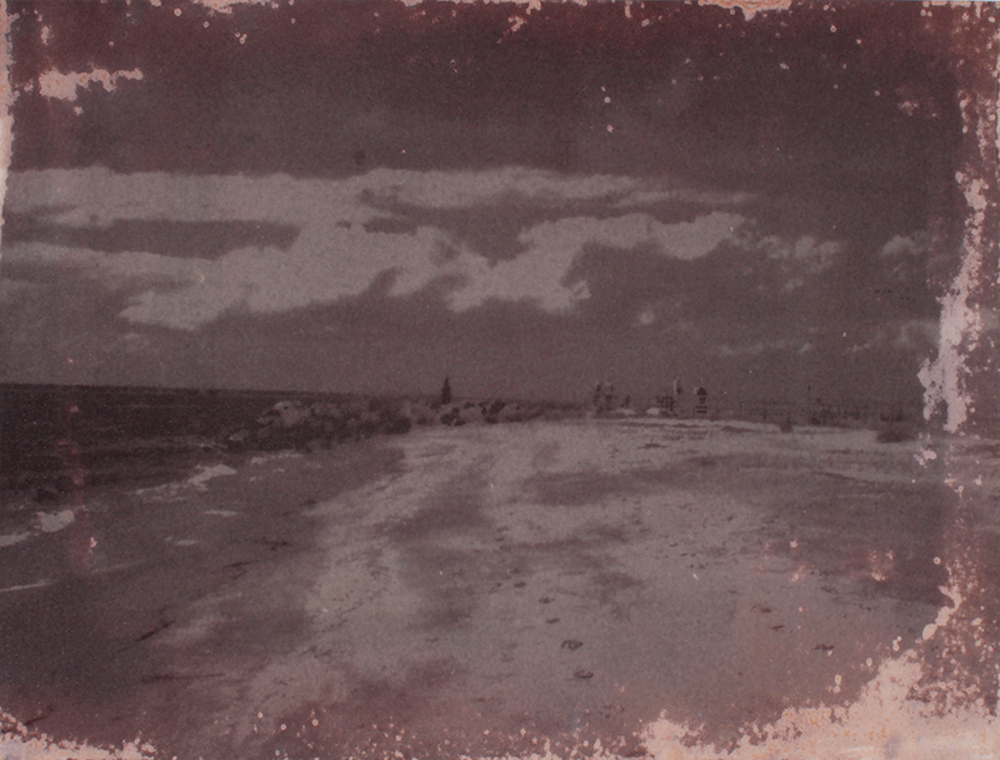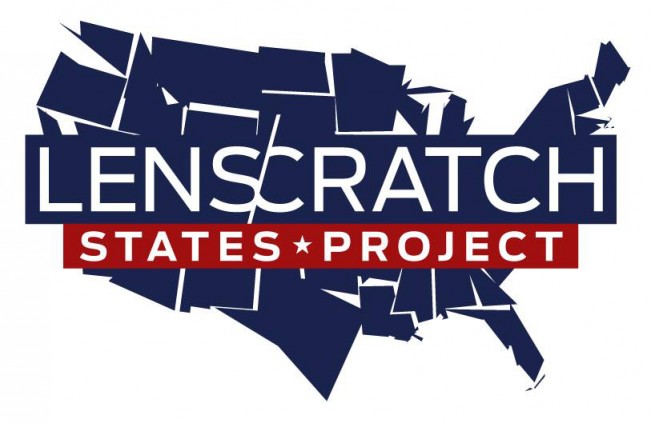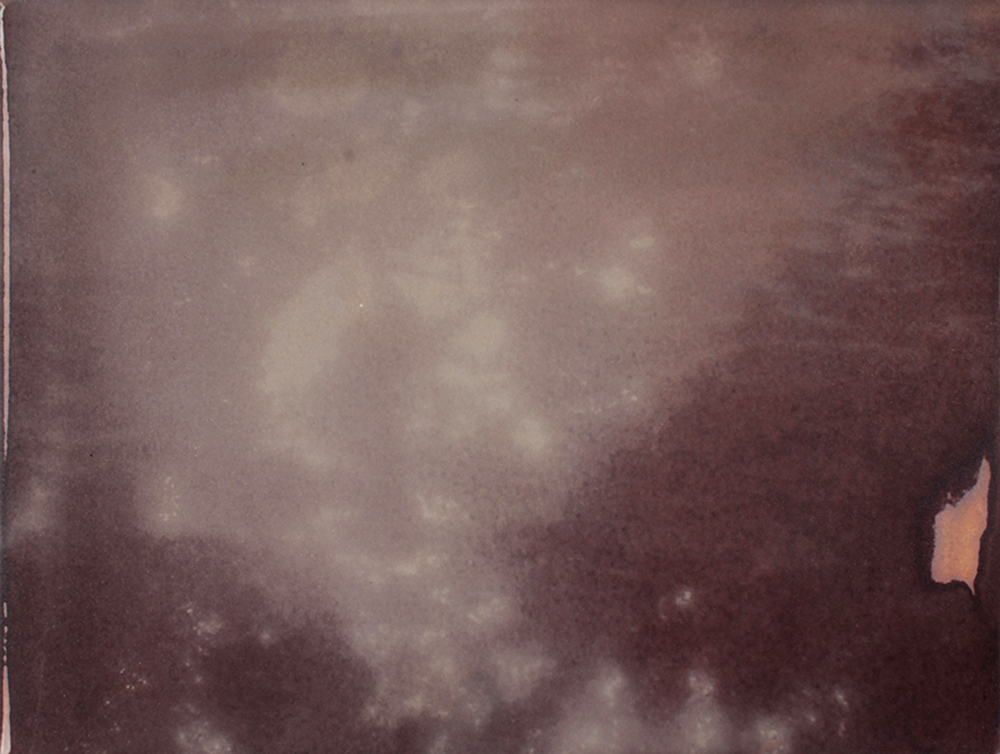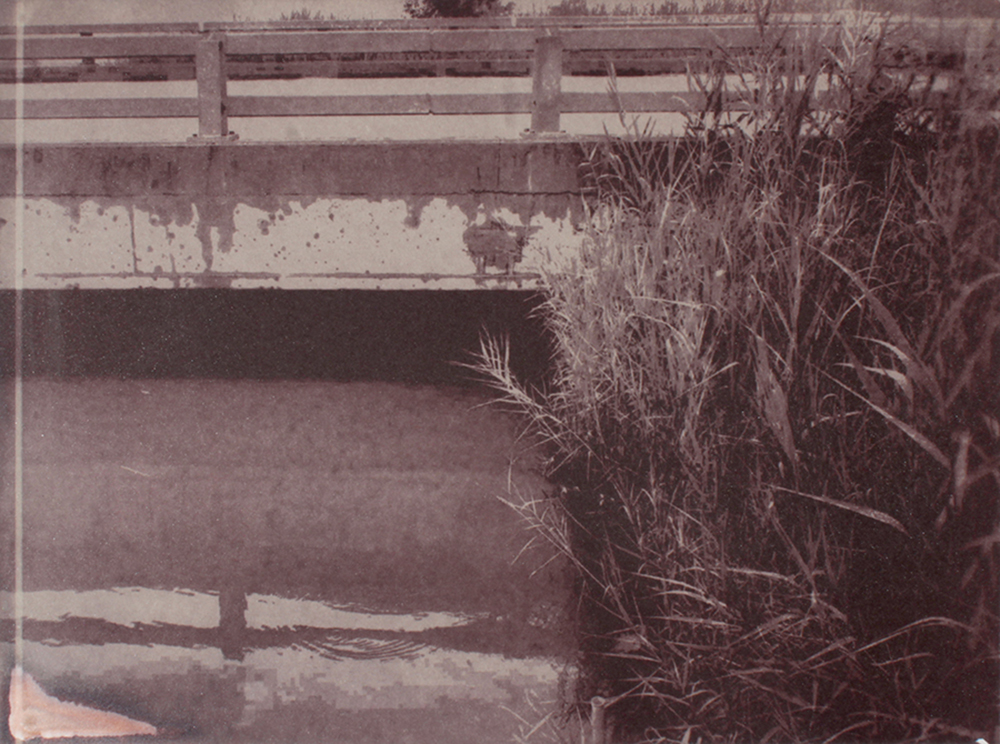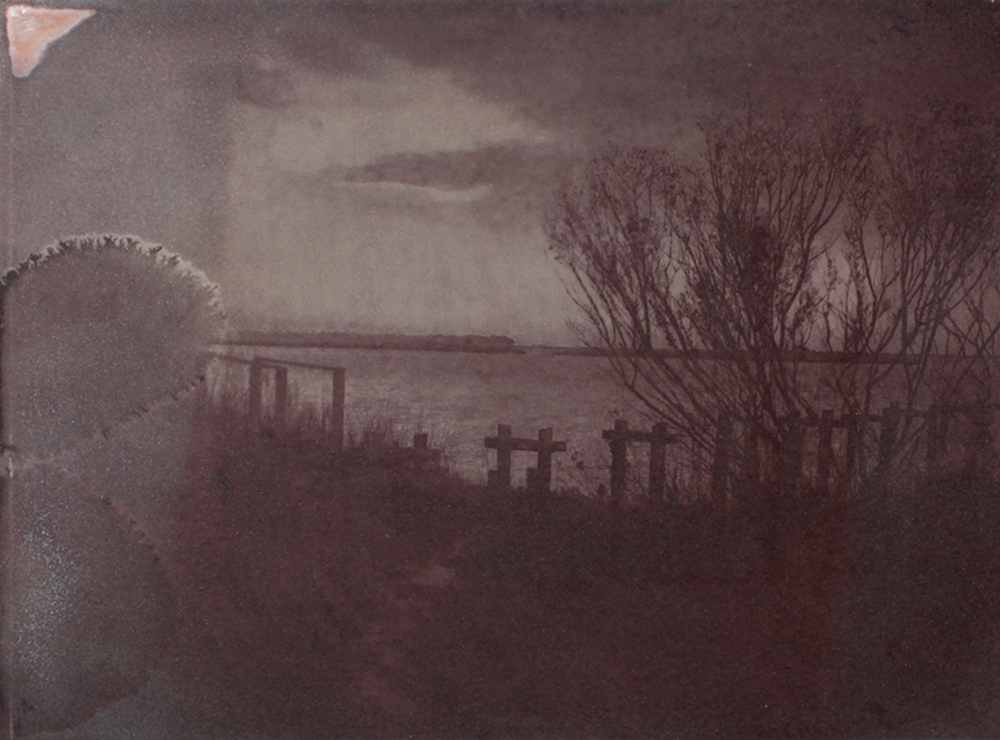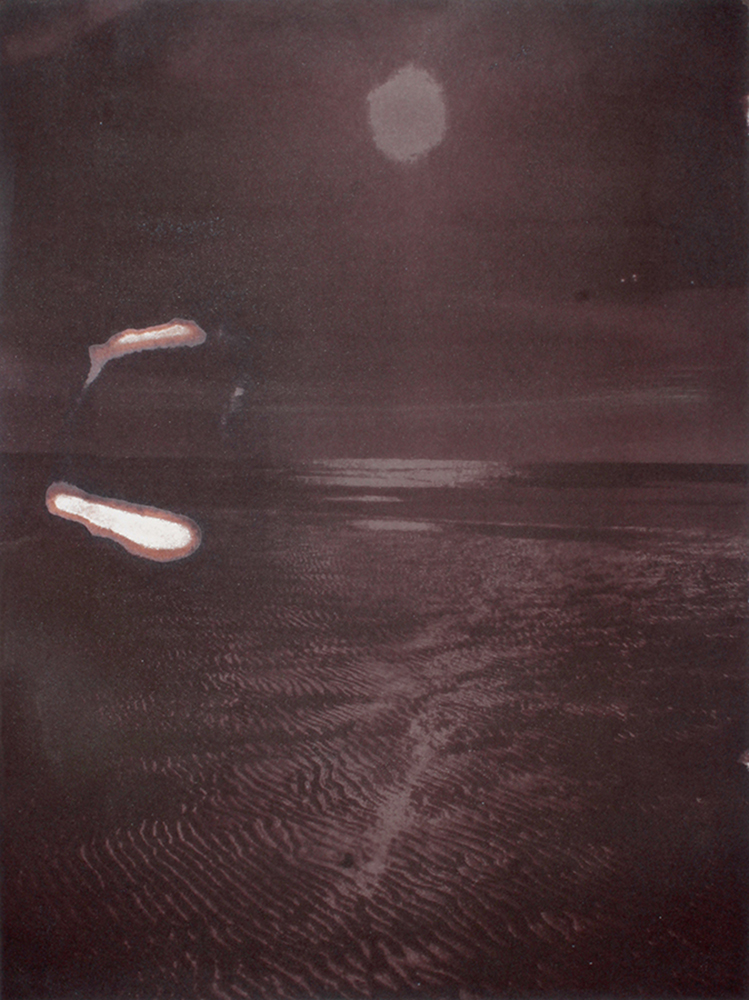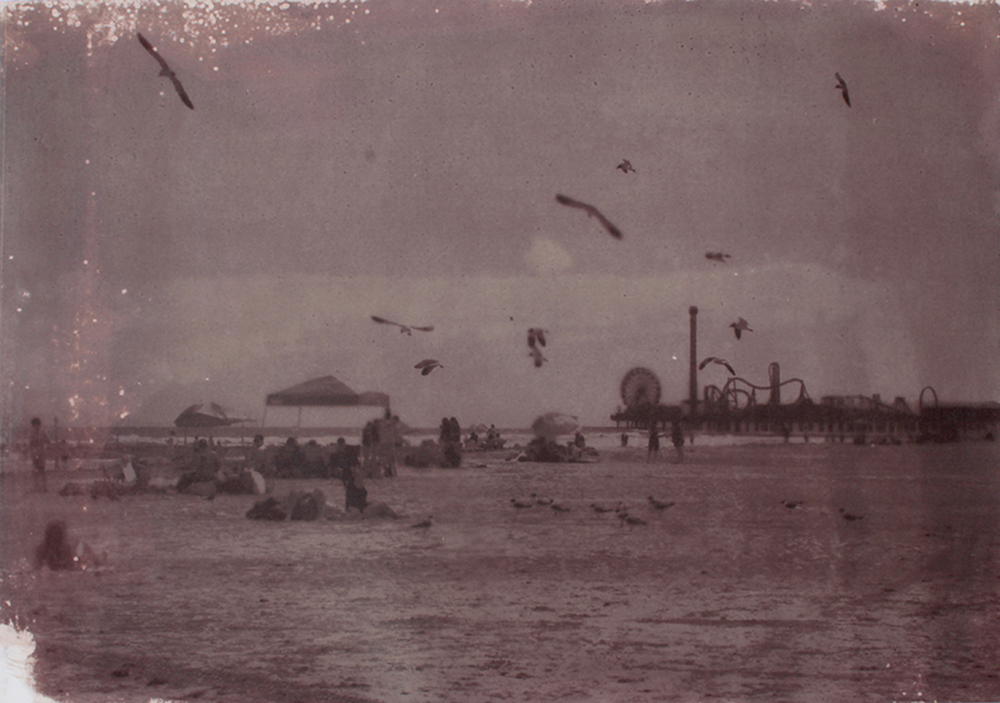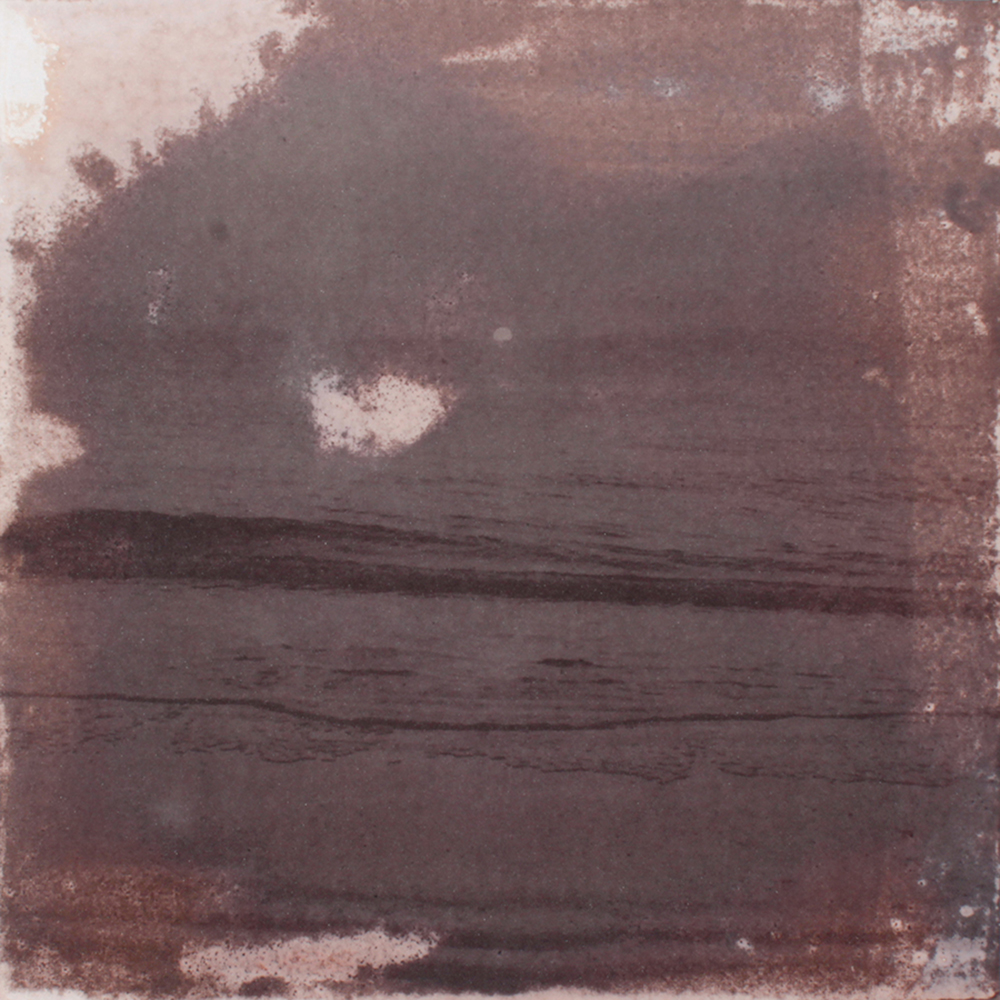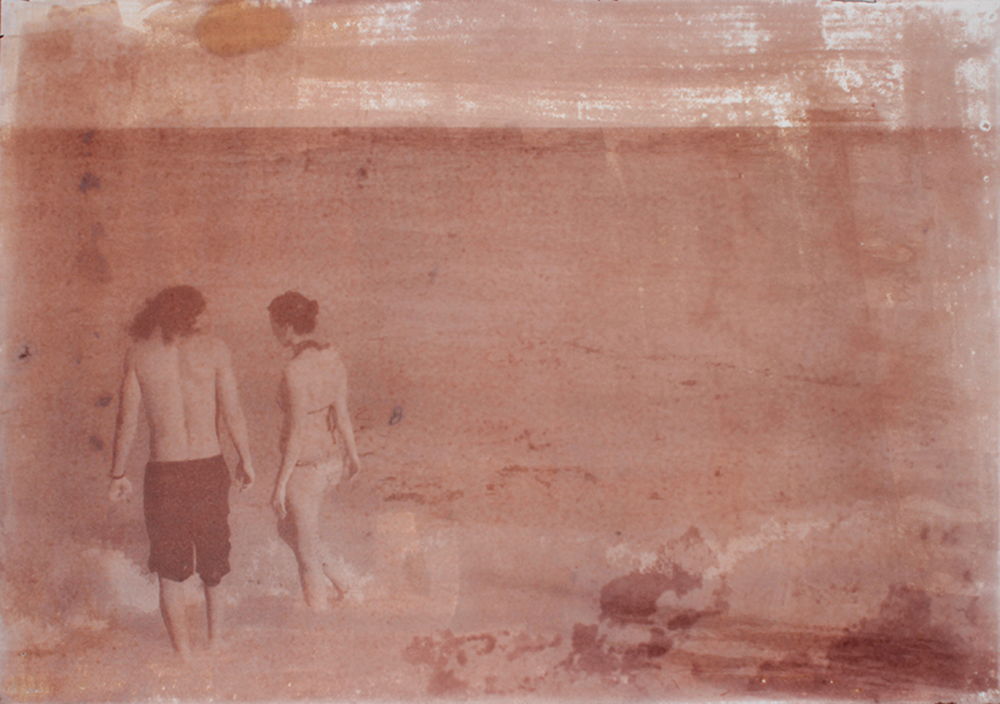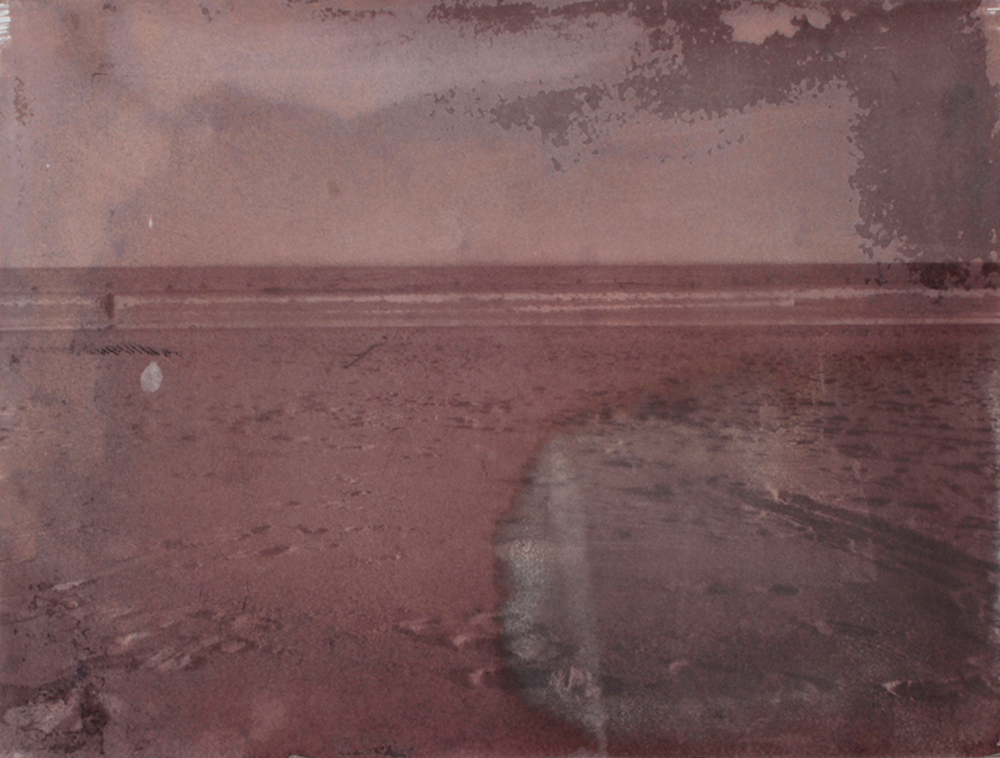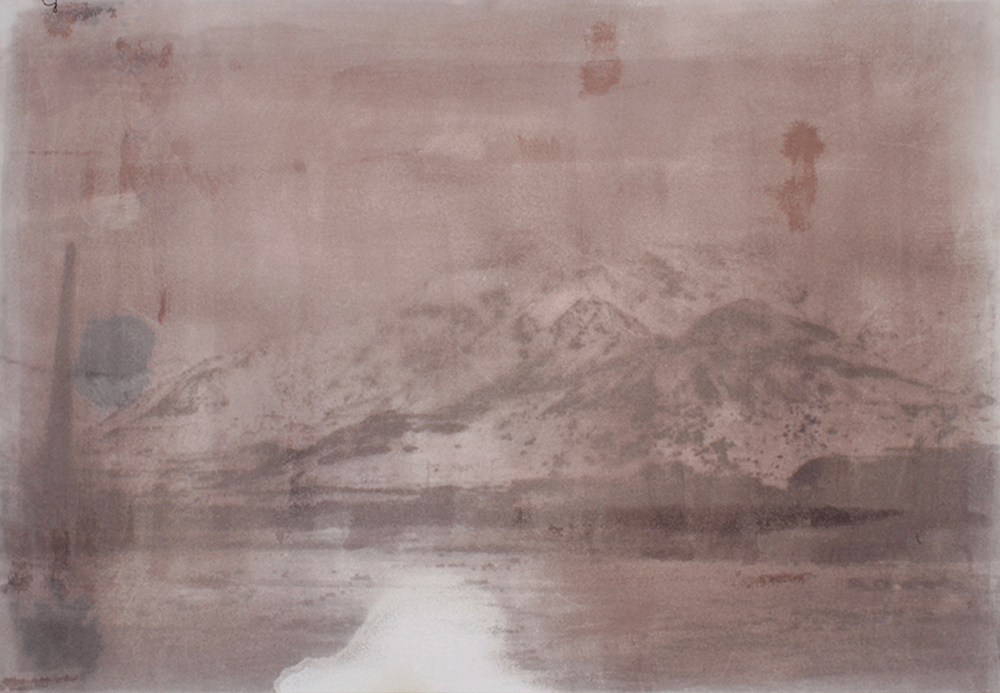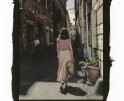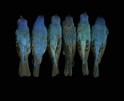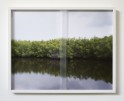Courtney Johnson: The States Project: North Carolina
As digital technology infiltrates the medium of photography, we are seeing a concurrent resurgence in the use of historical and alternative photographic processes. Making work at the intersection of digital and historical processes and technologies is where I like to hangout. Courtney Johnson plays in this same neighborhood. Why choose when you can use all the tools to communicate your ideas and investigate your questions?!
When historical photographic processes are used in a way that the process and/or materials used in the technique connect to the conceptual framework of the project, the result is often clever and full of surprise. Salt is an exceptional example of the technologies, materials, and ideas overlapping and creating awesome magic like an origami figurine. Courtney utilizes a very scientific and controlled approach to a range of saltwater bodies. She uses undiluted water from these sources to create images that represent the place, the specimen containers, and the physical impact of the water’s salinity on the photographic chemistry. Salt pushes the surface level idea of making salt prints of saltwater bodies, into a rich territory that celebrates the deterioration and transformation of the traditional recipe into an alchemical response. Courtney described the physical shifts in appearance created by the increased salinity, including shimmering surfaces and silvery gray pools and I felt like Pavlov’s dogs desperate to see them in person. While I’m delighted to share the images here, like most alternative processes, the physicality of the print is something that is lost with the Internet. Its comparable to seeing a painting in your art history class and then finally seeing it in person. You appreciate it’s content and impact from class, but you don’t understand the process and physicality of making the painting until you’re standing beside it in a museum desperate to get closer, but afraid of setting off the alarms and being yelled at in a variety of foreign languages—yeah, I’ve been there before.
I’m looking forward to seeing Salt in person. The clever approach to making and the appreciation of material and chemical reaction that Courtney continues to pursue in her art making is delightful.
Courtney Johnson has mounted solo exhibitions in New York, San Francisco, Miami, and Bogotá, Colombia where her work was featured in Fotográfica Bogotá 2011, the 4th International Biennale of Photography. Johnson’s work is included in numerous permanent collections including the Museum of Fine Arts, Houston; the Museum of Art, Fort Lauderdale; and three large-scale site-specific cliché-verre works commissioned for the University of Central Florida.
Johnson earned her Bachelor of Fine Arts with Honors in Photography and Imaging from New York University’s Tisch School of the Arts, and her Master of Fine Arts in Studio Art from the University of Miami. She is currently an Associate Professor of Photography in the Department of Art & Art History at the University of North Carolina Wilmington.
Salt
Salt is series of salted paper prints using salt water with varying salinity from natural sources.
Varying the salinity of the water used in the gelatin salt solution results in a tonal variation of the prints from pinkish gray to sepia shades. The natural salt water is mixed directly with gelatin, rather than diluted to a consistent salinity (typically 2%); therefore, the results vary considerably. One particularly beautiful effect of the unusual hypersalinity in this process is the accumulation of salt on the finished images, which sparkles in the light.
The salt water in this series originates from a variety of sources including multiple points on the Atlantic Ocean, Gulf of Mexico, Cape Fear River, which, as an estuary, varies in salinity, as well as the Great Salt Lake and Badwater Basin. The Sodium Chloride content of the water samples measured with a Salt Brine Hydrometer varies from 1% to 55% salinity.
The prints were created by contact printing digital photographic negatives of the bodies of salt water as well as making photograms of the water collection bottles.
This series was generously supported by a Charles L. Cahill Research Award.
When a project’s content, process, and conceptual framework are all interwoven, the result is incredible. Salt does this beautifully. Can you talk about the genesis of the project and how you developed these connections?
As long as I’ve been doing photography, I’ve been working with experimental, alternative, and historical photographic processes. In 2012 I made some salt prints using salt water from the Atlantic Ocean as a side project while making a series of underwater pinhole photographs off all the fishing piers in North Carolina. I’d been thinking about expanding salt prints with natural salt water since then.
For this project, I knew the process before I knew the imagery. I wanted to collect natural salt water from a variety of locations to make salt prints. I wanted the process to loosely parallel the scientific process in data collection, while leaving questions unanswered. In 2007 I made a series of salt prints called Pencil of Technology after William Henry Fox Talbot (the inventor of salt prints)’s Pencil of Nature. Like Fox Talbot, my salt prints in this series were photograms, but rather than plants, my images featured various, often unidentifiable, “advancements” in technology since 1839. For Salt, I originally planned to exclusively make photograms of the water collection bottles and include the collected information text in the images, almost like Anna Atkins’ British Algae. I did make several photograms, though I decided not to include text within the images. As the project evolved, I decided to include photographs of the locations as well, and in the end those most viscerally connect the process with the locations and contain more interesting ideas.
Your work in general seems very deeply connected to process—not just the tools and alchemy, but the entire process from idea generation through to the final object or print. Can you discuss the role or significance of process for you?
Process is what originally drew me to photography. I really enjoy the chemistry and physicality of alternative processes and analog photography. I’m also very interested in experimentation and pushing the boundaries of what a photograph can be. I see photography and its rapid development and discarding of processes as a microcosm of the speed of technological change, particularly in the digital era. I ask questions with my work about human developments and technology’s effects, and photography–especially experimental photography–is ideally suited for my subject matter.
During this project, I was continually surprised by the richness of connections to the process and current events. Shortly after I began working on the series, news broke that the Cape Fear River, which supplies my own drinking water, was contaminated with the toxic chemical, GenX, which was being dumped by the Chemours Plant up river. There are still questions about what additional chemicals are in the water. The variations in the print results in this series, even with the same salinity of water, raise questions about the effects of pollutants and other variations in the water.
Additionally, I got water samples from Galveston in May 2017 and Key West and Miami in February 2017. Hurricane Harvey hit Texas in August 2017, and Hurricane Irma hit Florida in September. I can’t help but read the images of these locations differently after the storms. Of course hurricanes and climate change affect coastal communities, where most natural salt water is located, more obviously, but I continued to be surprised at how apparent and timely the relationships to environmental issues were while making this series.
The images from Salt were taken from a wide geographical span. How long have you been working on this?! Do you have plans to continue exploring salt water bodies?
I got a Cahill Grant for this series in December 2016, and started collecting salt water in January 2017. I made the prints from May through August of 2017. I presented the series at Salted Paper Prints: Process and Purpose Symposium at Harvard University in September, and had been working to complete the majority of the series by then. I made over 200 prints from 19 water samples. I have collected 5 samples since then including salt water from Coney Island, Fire Island, and Jones Beach. I plan to continue collecting water and making prints to add to the series over time, particularly from widely varied geographical locations and bodies of water with extreme salinity, while working on other projects.
I wanted a wide range of salinity, so I felt that going to the Great Salt Lake with a 55% salinity was important to the project. Those images are the most aberrant from standard salt prints being a light purplish gray. I use the natural salt water straight, without diluting it, so the results vary widely. Estuaries, like the Cape Fear River, as well as the Gulf of Mexico, with lower salinity than oceans, provide the most consistent results as they’re closer to the 2% salinity ideal for salt prints.
How does teaching influence your creative process? Feel free to be candid!
I tend to experiment with variations of techniques that I’m teaching. When something is on my mind, like it is when I’m teaching it, I create problems around it for myself to solve. For example, I got the idea for my underwater pinhole series while teaching pinhole cameras to my students, walking on fishing piers, and trying to figure out a way to make a pinhole exposure underwater from a fishing pier. I also enjoy the feedback I receive from students. When I’ve told my alternative process students about making salt prints with natural salt water, their enthusiasm for the idea definitely had a role in encouraging me to pursue that idea further.
Posts on Lenscratch may not be reproduced without the permission of the Lenscratch staff and the photographer.
Recommended
-
Lorraine Turi: The States Project: North CarolinaNovember 19th, 2017
-
Aspen Hochhalter: The States Project: North CarolinaNovember 18th, 2017
-
Leah Sobsey: The States Project: North CarolinaNovember 17th, 2017
-
Ryan Adrick: The States Project: North CarolinaNovember 16th, 2017
-
Courtney Johnson: The States Project: North CarolinaNovember 15th, 2017

